You’ve got a big puppy with giant paws and a huge appetite, right? Feeding a large-breed puppy isn’t just about pouring kibble into a bowl. Their bodies grow fast, and their bones develop quickly.
If you get their nutrition wrong now, it can lead to joint problems later. I’ve seen it—watching a growing pup trip over their legs while chasing their tail is cute, but healthy growth needs more than just calories.
Choosing the best puppy food for large breeds means balancing protein, calories, and nutrients. This helps your furry friend grow strong, not overweight. Let’s break it down together, like two friends chatting over coffee.
Why Large Breed Puppies Need Special Food
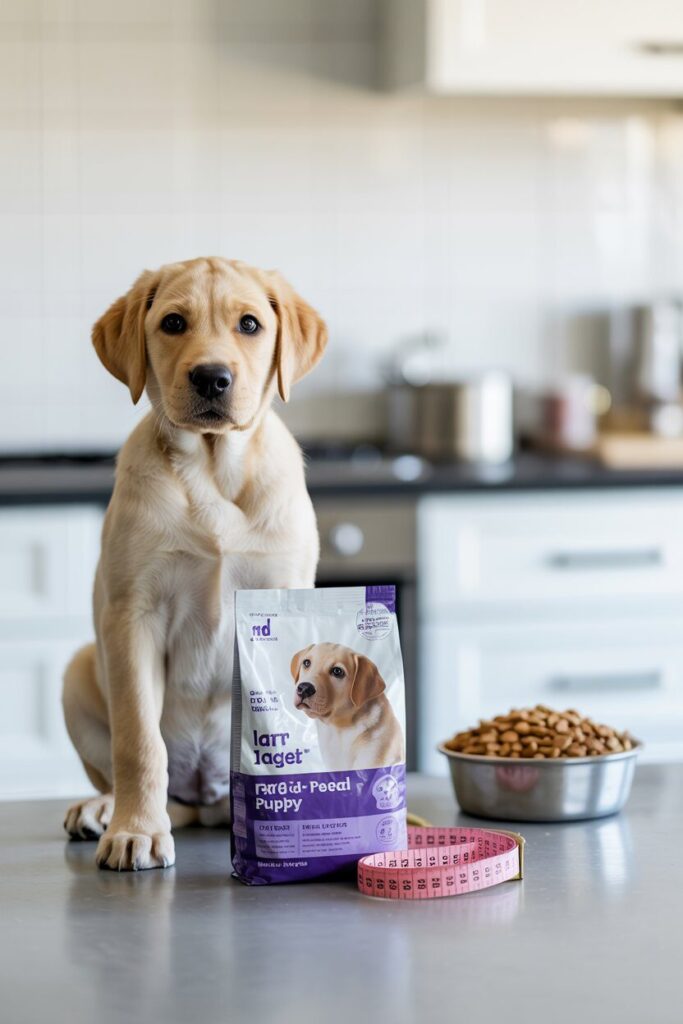
You might wonder, “Can’t I just give them regular puppy food?” Not really.
Large breed puppies grow slower but end up much heavier, so they need specific nutrient levels to support bone strength and joint health without packing on unnecessary fat.
The big issue? Too many calories. When large breed puppies grow too fast, their bones and joints can’t keep up.
This can lead to hip dysplasia or other painful joint issues later on. The goal isn’t to make them grow faster; it’s to help them grow right.
Here’s what to look for in their food:
- Controlled calories: Keeps growth steady, not excessive.
- Balanced calcium-to-phosphorus ratio: Supports proper bone development.
- High-quality protein: Builds strong muscles without adding unnecessary weight.
- Glucosamine and chondroitin: Protect growing joints.
Basically, you’re not just feeding a puppy. You’re fueling a future athlete—or at least a couch-surfing champion who can still jump onto the sofa without struggling.
What to Look for in the Best Puppy Food for Large Breeds
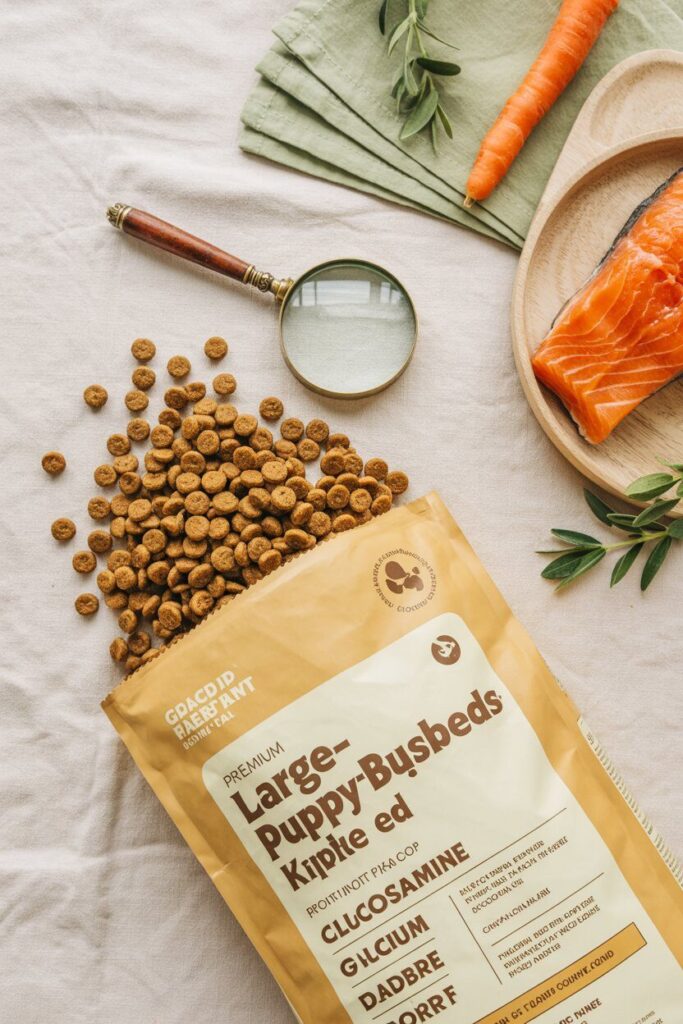
Now, not every “premium” bag at the pet store is worth its price tag. Here’s what separates a genuinely great formula from the rest of the pack.
1. Protein First
Large breed puppies need around 22–30% protein in their food. Look for real meat (like chicken, lamb, or salmon) as the first ingredient. If the first word on the label is “corn,” run.
I once made the mistake of buying “high-protein” food only to realize the protein came from peas and soy instead of meat.
My pup’s fur lost its shine, and she wasn’t as energetic. Lesson learned—real animal protein matters.
2. Healthy Fats
You want fats that provide energy and support brain development. Omega-3 fatty acids from fish oil are amazing for puppies’ coat and cognitive growth.
Just remember, too much fat can lead to unnecessary weight gain.
3. Calcium and Phosphorus Balance
This one’s huge. Large breed puppies need the right ratio (about 1.2:1) of calcium to phosphorus. Too much calcium can mess with bone development. Always check the label or the brand’s nutritional info online.
4. Joint Support Ingredients
Ingredients like glucosamine, chondroitin, and DHA are like joint insurance for your puppy.
You might not see the difference now, but you’ll thank yourself when your dog hits adulthood without limping after playtime.
5. Avoid Fillers and Artificial Additives
If you see terms like “meat by-product” or “artificial colors,” put that bag back. Your puppy deserves real food, not leftovers mixed with food coloring.
Top Picks: Best Puppy Food for Large Breeds
Alright, let’s get to the fun part. Here are some of the top-rated options that I’ve either tried myself or seen work wonders for other large-breed pups.
1. Hill’s Science Diet Large Breed Puppy
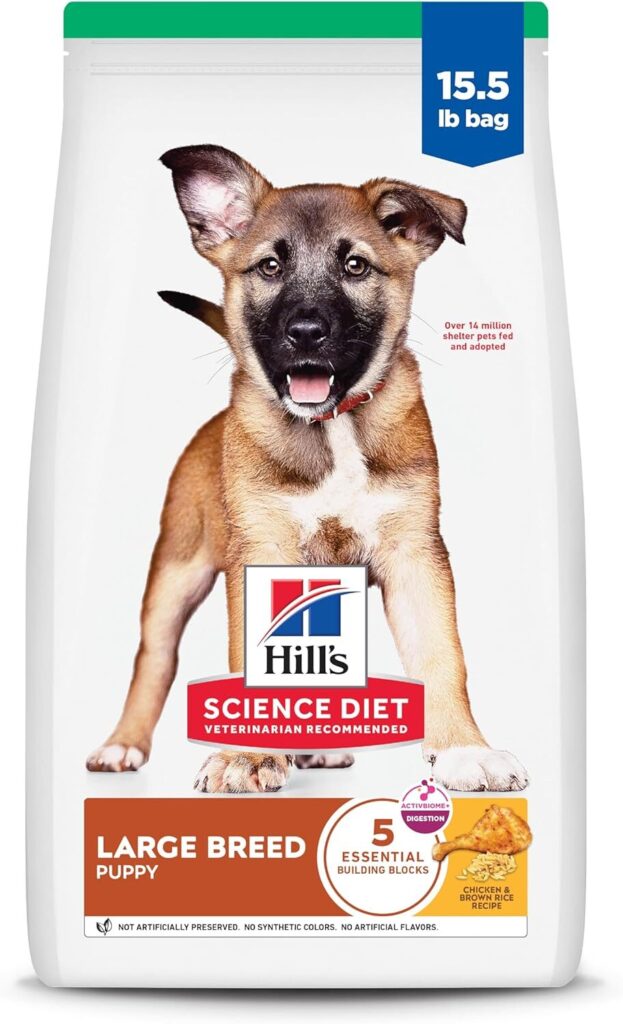
This one’s a classic. It’s formulated specifically for large breeds and backed by a ton of research. You’ll notice shinier coats, firmer stools (every puppy owner cares about that), and steady, healthy growth.
Why I like it:
- Perfect calcium balance
- High-quality chicken protein
- Added DHA for brain and eye development
Sure, it’s not the cheapest, but when it comes to your pup’s long-term health, it’s worth every coin.
2. Blue Buffalo Life Protection Large Breed Puppy
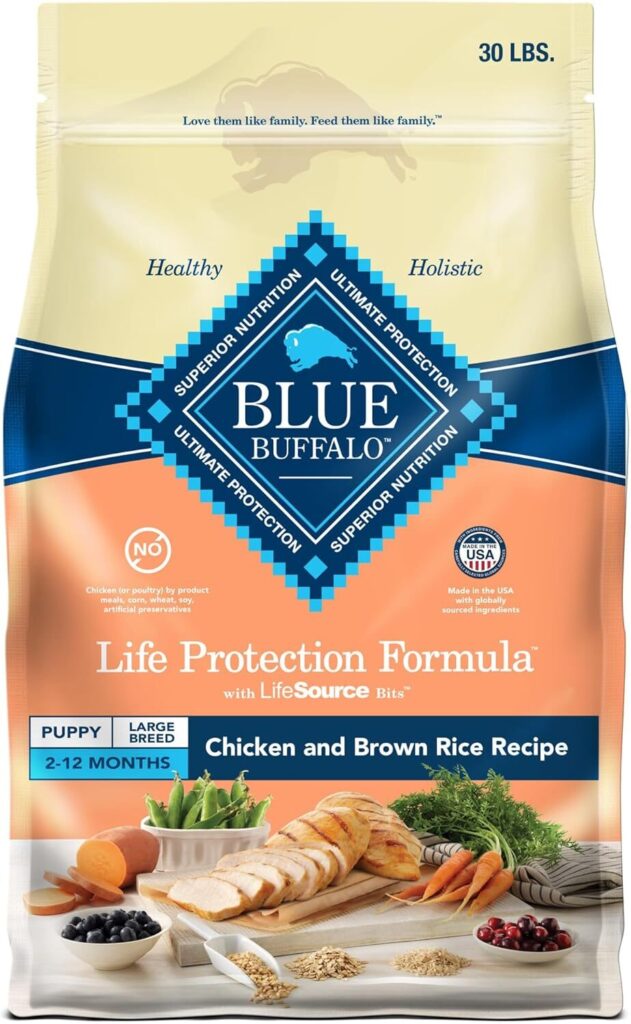
Blue Buffalo uses real chicken and brown rice—a solid choice for owners who prefer natural ingredients. It also includes LifeSource Bits, which are nutrient-rich clusters with vitamins and antioxidants.
What stands out:
- No corn, wheat, or soy
- Natural joint-supporting ingredients
- Great taste (at least, my pup acts like it’s gourmet)
3. Purina Pro Plan Large Breed Puppy
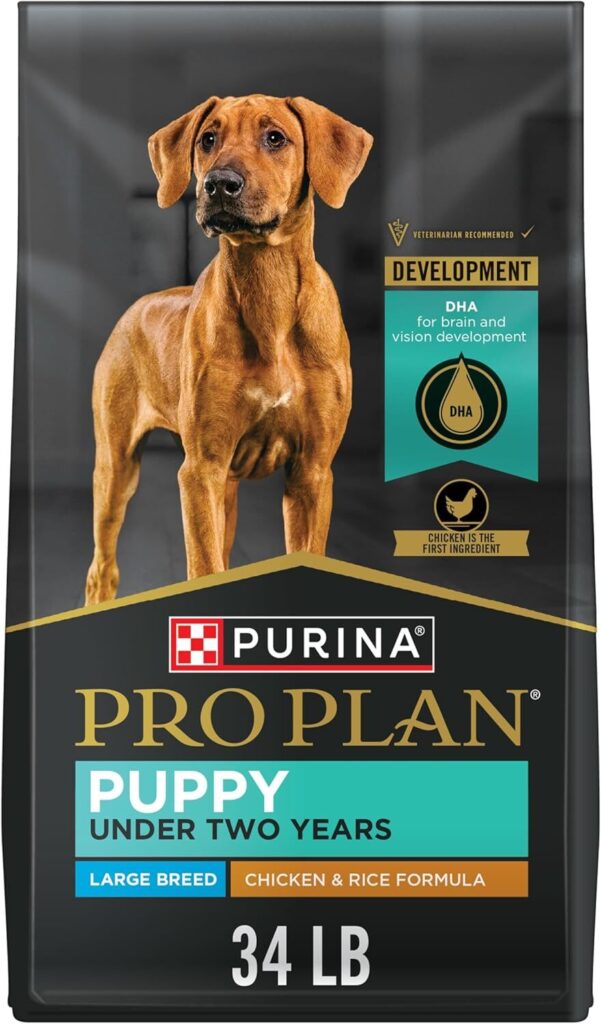
Purina’s Pro Plan line gets a lot of praise from breeders and vets alike. It combines high protein levels with probiotics for better digestion. Puppies with sensitive stomachs seem to thrive on it.
What’s great about it:
- Fortified with live probiotics
- Promotes lean muscle growth
- Veterinarian-approved for long-term use
4. Royal Canin Large Puppy
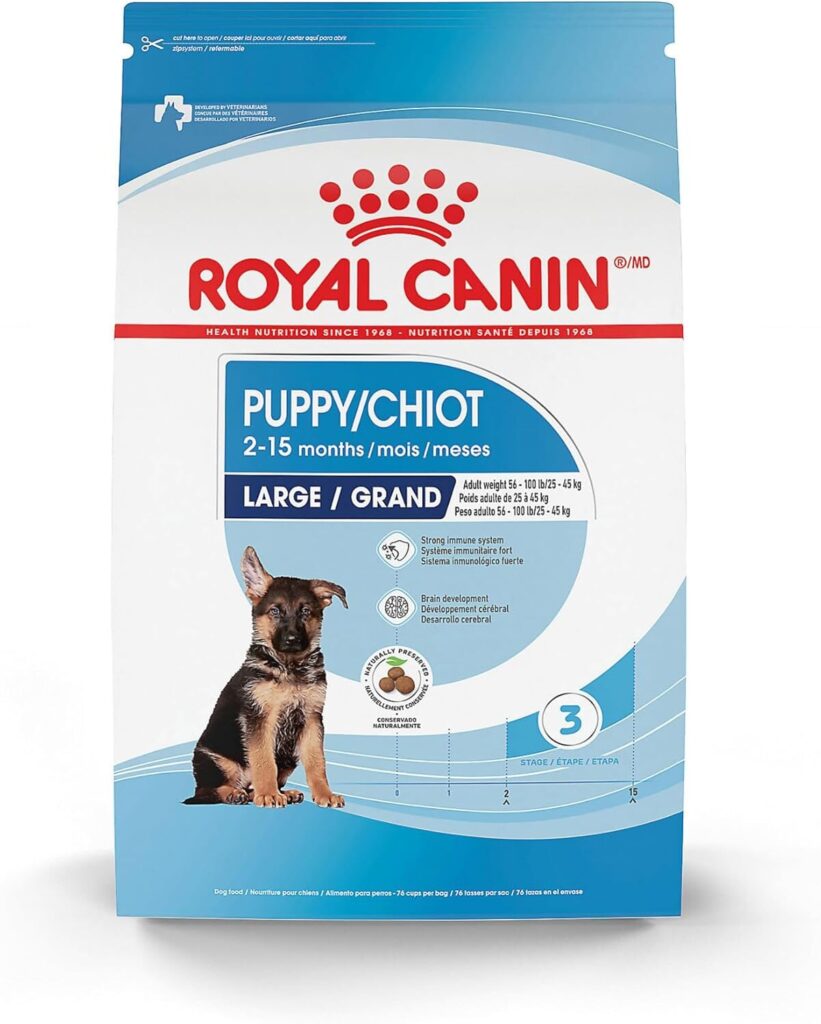
Royal Canin customizes nutrition based on breed size and growth patterns. Their large puppy formula controls growth speed and includes antioxidants to boost immunity.
Pros:
- Scientifically tailored for large breeds
- Precise nutrient ratios
- Easily digestible formula
The only downside is the price tag. But honestly, it’s like feeding your pup a meal designed by a canine nutritionist.
How Much Should You Feed a Large Breed Puppy?
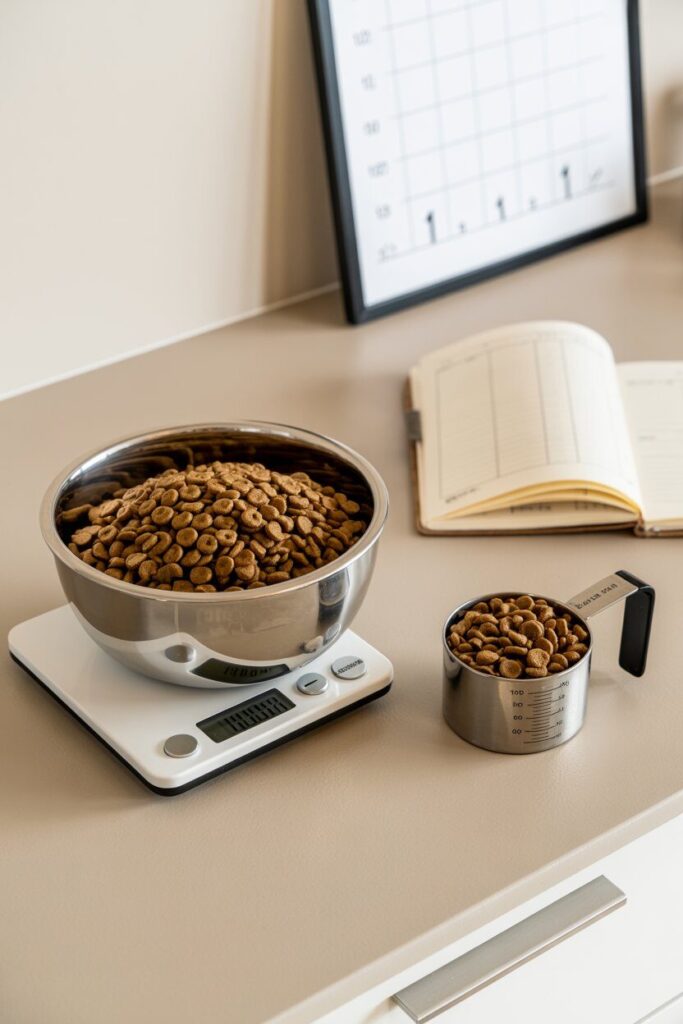
This question pops up a lot, and I get it—it’s tricky. Feeding too much can cause rapid growth, while too little can stunt development.
Most puppy food brands provide feeding charts on the bag based on your pup’s weight and age, but here’s a general guide:
- 2–3 months: 3–4 meals a day
- 3–6 months: 2–3 meals a day
- 6+ months: 2 meals a day
Keep an eye on their ribs—you should be able to feel them but not see them. If your pup looks like a furry sausage, it’s time to cut back a little.
And no, feeding more won’t make them “grow faster.” It’ll just make them grow wider.
Wet vs. Dry Food: Which Is Better?
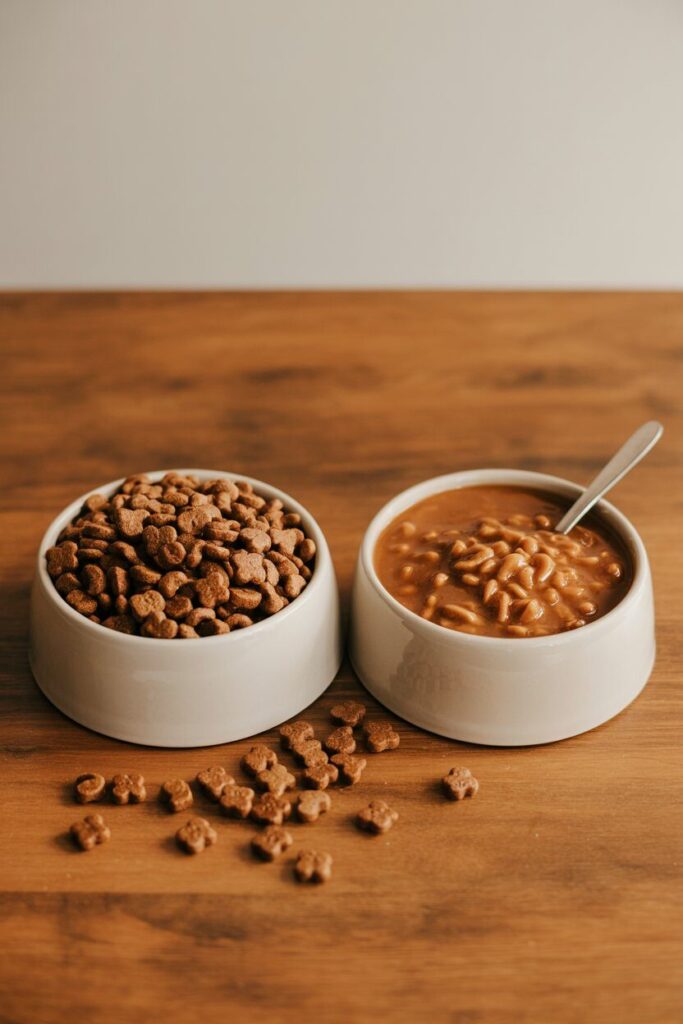
Ah, the age-old debate. Honestly, both have their perks.
Dry food (kibble):
- Easier to store and measure
- Helps keep teeth clean
- Usually more affordable
Wet food (canned):
- More flavorful and hydrating
- Easier for picky eaters
- Great for mixing with kibble
If you’re like me, you’ll probably end up mixing both. A scoop of wet food with dry kibble makes mealtime more exciting and helps your pup stay hydrated.
Homemade Puppy Food: Yay or Nay?
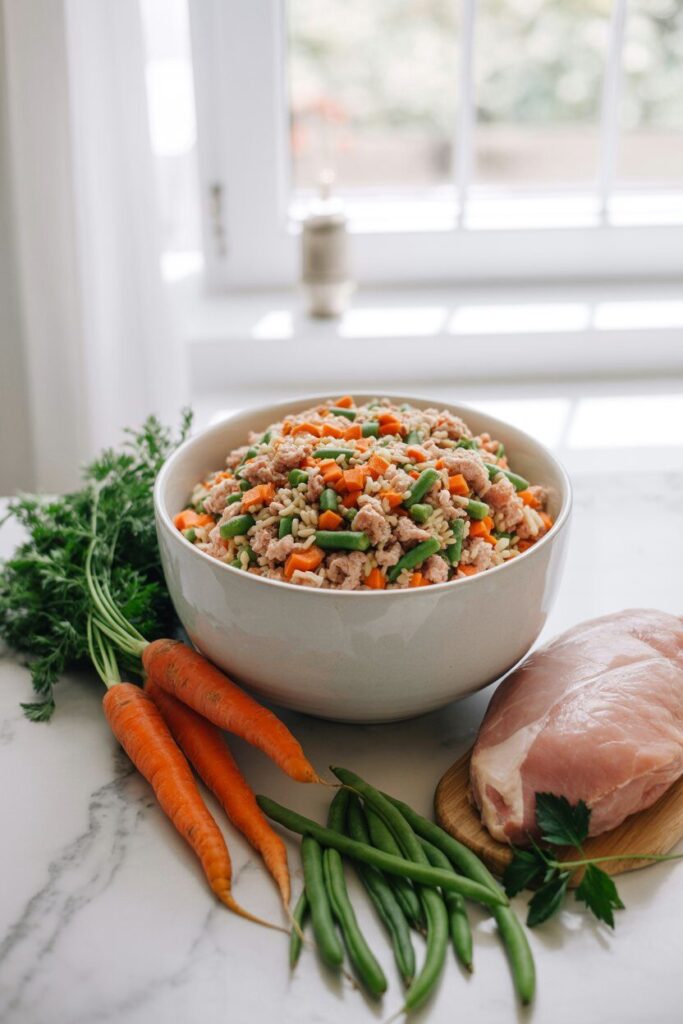
Some dog parents love making homemade meals, and I get the appeal. You control every ingredient, and it feels like you’re cooking for family (because, well, you are).
But unless you know how to balance nutrients properly, it can be risky.
Large breed puppies have specific calcium and phosphorus needs, and getting that ratio wrong could lead to bone issues.
If you’re going the homemade route, work with a vet or canine nutritionist to make sure your recipes hit the mark.
Personally, I stick to high-quality commercial food and toss in healthy extras like pumpkin puree or cooked carrots as occasional treats.
My pup loves it, and I get peace of mind knowing he’s getting complete nutrition.
Common Feeding Mistakes to Avoid
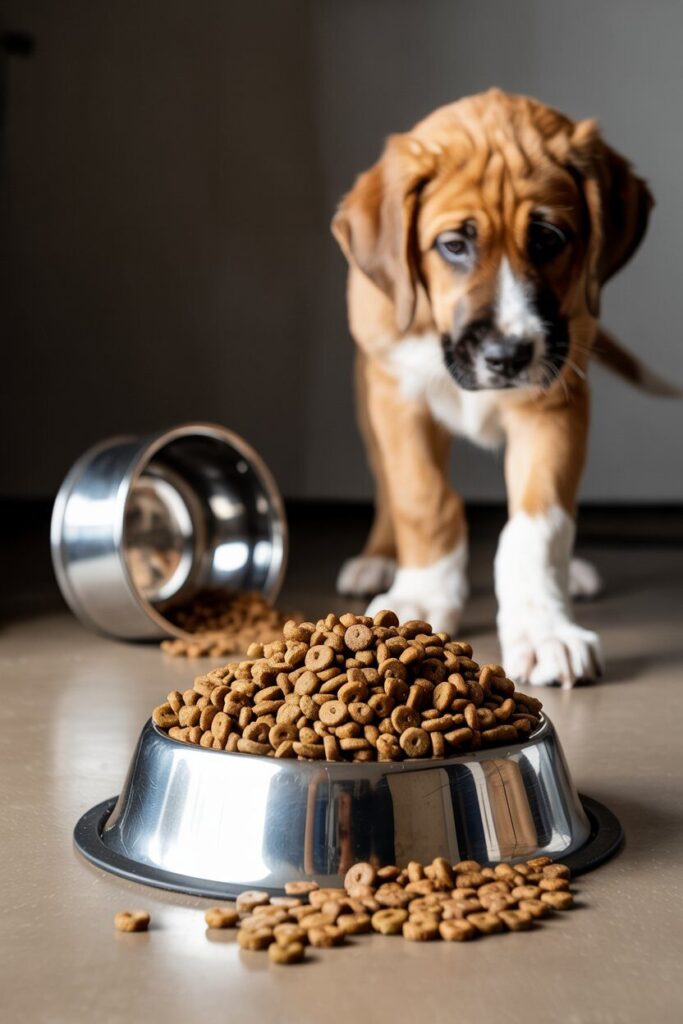
Even the most caring puppy parents slip up sometimes. Here are the biggest ones to avoid:
- Overfeeding: Just because your puppy acts hungry doesn’t mean they need more food.
- Switching brands too quickly: Always transition gradually over 7–10 days.
- Too many treats: Keep treats under 10% of daily calories.
- Ignoring portion sizes: Large breed puppies need controlled portions, not all-you-can-eat buffets.
And the most overlooked one—not adjusting portions as they grow. Puppies grow fast, but their calorie needs change constantly. Keep checking the feeding chart on your food bag.
A Personal Tip: Observe, Don’t Obsess
I used to check my pup’s growth chart every week like an overprotective parent. Eventually, I realized it’s better to watch how they move and play than obsess over numbers.
If your puppy is playful, energetic, and has a shiny coat, you’re probably doing it right. If they’re sluggish or gaining too much weight, that’s your cue to tweak their diet.
Puppies are like kids—they all grow at their own pace. The key is providing balanced nutrition, not chasing growth milestones.
Transitioning to Adult Food
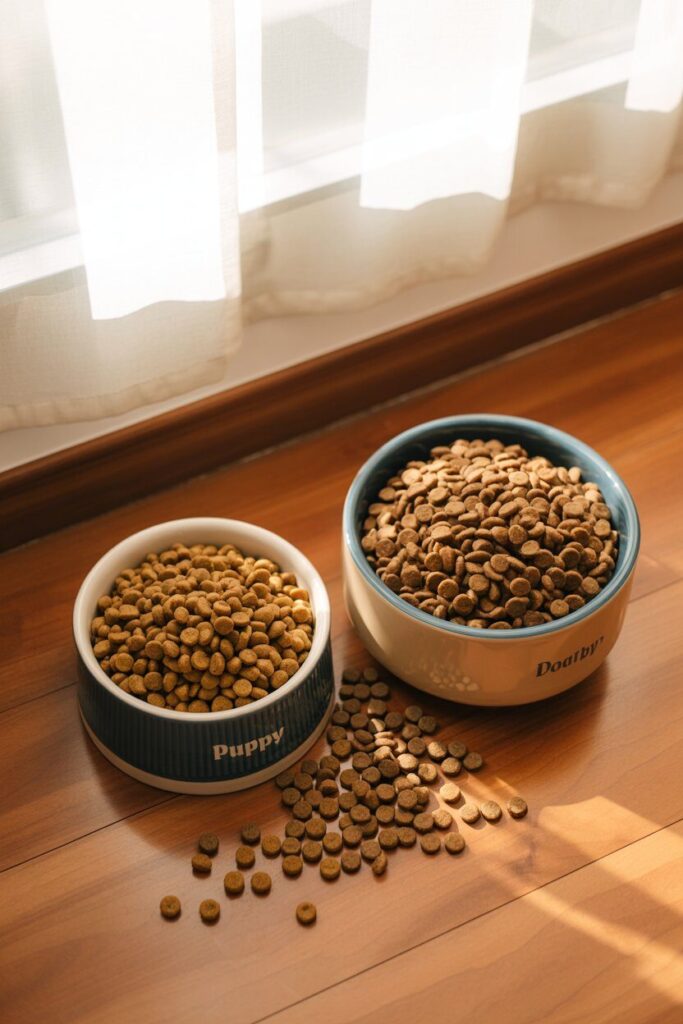
At around 12 to 18 months, most large breed puppies are ready to switch to adult food. The timing depends on their breed—giant breeds might need puppy food a bit longer.
When transitioning, mix the new food with the old one gradually over a week or so. This prevents stomach upset and helps your dog adjust smoothly.
Remember, adult food has fewer calories, so switching too early could slow growth, while switching too late could make them gain unnecessary weight.
Final Thoughts
Feeding a large breed puppy isn’t rocket science, but it does take attention and care.
The best puppy food for large breeds should support strong bones, steady muscle growth, and a healthy weight—without turning your dog into a chunky mess.
If you choose a trusted brand, follow feeding guidelines, and keep an eye on your puppy’s condition, you’re already miles ahead of many new dog owners. Think of it this way—you’re building your pup’s foundation for life.
And when your fully-grown gentle giant sprints across the yard or leaps into your arms (almost knocking you over), you’ll know you got it right.
How Do I Choose the Best Puppy Food for My Large Breed Puppy?
Choosing the best puppy food for large breeds starts with knowing that not all formulas are the same. Large breed puppies have special needs. They grow slower and reach higher weights.
Look for food with controlled calories, balanced calcium and phosphorus, and real animal protein as the main ingredient.
This helps ensure your pup’s muscles, bones, and joints develop well without gaining too much weight.
Check the label for DHA, glucosamine, and chondroitin. These support brain development and joint health.
Avoid anything with “by-products” or artificial colors—they’re just junk food in disguise. If you’re unsure, ask your vet for advice based on your puppy’s breed and growth rate.
When Should I Switch My Large Breed Puppy to Adult Food?
Most large breed puppies can switch to adult food between 12 and 18 months, but it varies by breed. For instance, Great Danes and Mastiffs grow slower and may need puppy food longer.
Labs or Shepherds might switch earlier. The key is to change after your dog is about 80–90% of their expected adult size.
To prevent stomach upset, transition gradually over a week. Start by mixing small amounts of adult food with puppy food.
Increase the adult food ratio each day. This helps your dog’s digestive system adjust smoothly while keeping nutrient absorption steady.
Is Grain-Free Food Good for Large Breed Puppies?
Grain-free puppy food has become popular lately, but it isn’t always better. Some grain-free diets use legumes like peas or lentils instead of grains.
This can mess with taurine absorption, which is crucial for heart health. For large breed puppies, balanced nutrition is more important than cutting out grains.
Unless your vet finds a grain allergy, going grain-free isn’t necessary. Good whole grains like brown rice or oatmeal can help with steady energy and digestion.
It’s better to choose high-quality ingredients than to follow food trends that might not help your pup grow.
How Much Should I Feed My Large Breed Puppy Each Day?
Feeding your puppy depends on age, weight, and activity level. A good rule is to follow the feeding chart on the food bag. Then, check your dog’s body condition.
You should feel the ribs but not see them. The waist should be visible from above. Overfeeding can cause joint strain and obesity.
Divide meals into smaller portions: 3–4 times a day for younger pups. Gradually reduce to 2 meals as they get older.
Controlled feeding helps keep energy levels balanced and prevents bloating, especially in large breeds. Remember, consistency is key—measure portions and adjust only if your pup’s weight changes noticeably.
Can I Mix Wet and Dry Food for My Large Breed Puppy?
Sure! Many dog owners do this. Mixing wet and dry food gives the best of both worlds. You get the crunch of kibble for dental health and the moisture of wet food for hydration and flavor.
Most large breed puppies enjoy this mix because it’s tasty and keeps them interested at mealtime.
Just be careful not to double the calories. Use smaller portions of each to keep things balanced. For example, mix a spoonful of wet food with their dry kibble to boost flavor without overfeeding.
The key is moderation. Your puppy’s belly—and your vet—will thank you.
